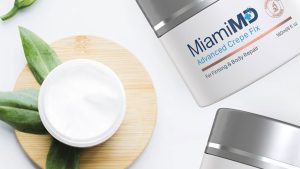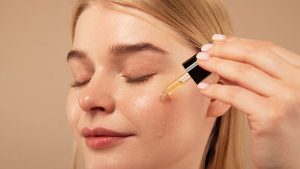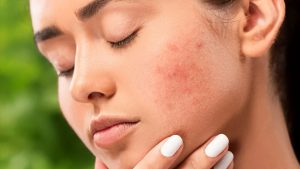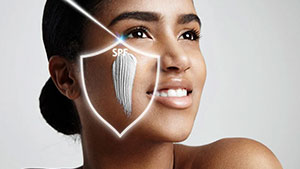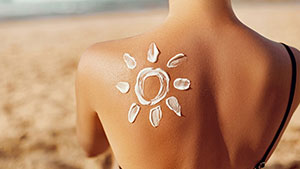Will Dark Spot Correction Even Work For Me?
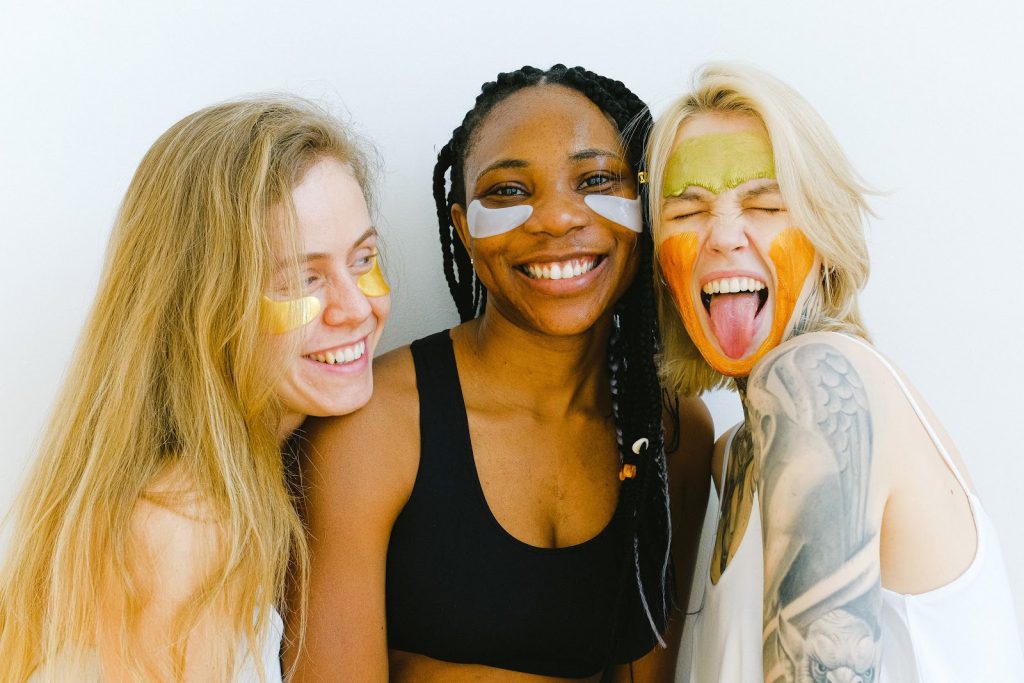
If you’ve been struggling with dark spots without having found anything that works, you’re probably feeling incredibly frustrated. Dealing with anything about your face that you don’t like can really negatively affect your self esteem, making you feel self conscious and self aware.
You’re also probably wondering… will dark spot correction even work for me?
While it may seem like you’re finding an endless battle against your own skin, knowing which products can actually help make a difference can help you spend your time and effort in the right place, and MiamiMD is here to help.
What Are Dark Spots, Anyway?
To truly learn about how to treat dark spots and what ingredients will be the most efficient at doing that, it’s important to at least have a basic understanding of what dark spots are. That way, you can more easily identify what products can help you fade them away.
Dark spots are also known as hyperpigmentation. Hyper means “more than normal,” and pigment refers to the amount of melanin that is present. When your skin starts to produce more melanin in one specific place on the body instead of all over (say, when you get more tan in the summer), it leads to hyperpigmentation.
The amount of pigment that is created and released (synthesized) by the body can be a direct response to different kinds of damage that can happen to the skin’s cells. Keep in mind that those cells can consider many things a threat, so they can be triggered to protect themselves by producing more pigment by a variety of different factors, including:
- Hormones – More commonly referred to as “melasma,” the hormones produced either naturally by the body during pregnancy or artificially in the body by people who use oral contraceptive pills.
- Ultraviolet radiation – Specifically the kind that comes from either the sun or artificial tanning beds, which can include both UV-A (which can reach into all of the layers of the skin) and UV-B (which have the largest effect on the skin’s top layer) light. We’ll get more into that in a moment.
- Physical trauma – This includes things like inflammation as the result of an injury, acne, or even surgery.
Of these factors, sun exposure is by far the most likely to contribute to the formation of dark spots. In every case, the chain of events that is needed to produce more pigmentation in the skin is started by tyrosinase. Tyrosinase takes an amino acid (tyrosine) and uses it to trigger the process that eventually leads to an increase in melanin.
Dark spots can happen anywhere on the body, but are most common on the face, chest, and hands. They can be small or large in size, and even happen in clusters or patches. This all depends mostly on the factors that are triggering them. For instance, sun-related dark spots are most likely to be seen on areas of the face and body that have the most consistent sun exposure.
How The Sun Can Cause Dark Spots
Let’s talk a little bit more about exactly how the sun can cause dark spots.
The part about sun exposure that is so potentially dangerous is that the damage isn’t always obvious as it happens. While many people realize that they overdid it when they wake up the next morning with a sunburn (or even blistering, which can indicate that your sunburn has progressed from a first degree to a more dangerous second degree sunburn), much of the effects of sun damage aren’t obvious until decades later.
As we already touched on briefly, there are two different types of ultraviolet (UV) rays that can affect the skin.
Ultraviolet A (or UV-A) rays are the vast majority of the rays (about 95%) that pass through the ozone layer and impact the skin. This is also the type of UV radiation that is used in tanning beds. These rays have the longest wavelength, which means that they can also penetrate through both cloud cover and even glass windows to reach the skin. Unfortunately, UV-A rays can also penetrate through the top two layers of the skin (the epidermis and the dermis). That’s why they are said to contribute to most of the visible signs of aging — fine lines and wrinkles, sagging skin, and dark spots.
Ultraviolet B (or UV-B) rays, on the other hand, mostly affect the top layer of the skin. They can actually begin to burn skin that is unprotected by sunscreen within 15 minutes, and are the cause of “sunburns.” Unfortunately, although they are not as prevalent as UV-A rays, UV-B rays can damage the skin’s actual DNA.
While, in the short term, exposure to both UV-A and UV-B rays will just cause an overall change in the skin’s pigment (“tanning”) or a sunburn, over time the skin cells will begin to recognize that sun exposure as damage. That can lead to an overreaction in the skin, causing pigment to build up on certain areas. As time goes by, that pigmentation continues to compound and appear more and more dark. Some people refer to it as solar lentigines, age spots, or even liver spots (although they have nothing to do with the liver).
This is one of many reasons that it is so important to wear sunscreen, even when you think you’ll have limited sun exposure. It should be the final step in any skin care routine.
Will Dark Spot Correction Even Work For Me?
The good news is, yes! Dark spot correction is likely to be able to work for you, as long as you know what to look for and have the patience to stick to it.
Unlike many other skin care products out there, dark spot corrector is something that takes time. Hyperpigmentation needs to be faded, and those spots won’t just disappear overnight. That’s why choosing a dark spot corrector with ingredients that are scientifically proven to be effective is incredibly important. Don’t waste your time with products that don’t work.
MiamiMD’s Dark Spot Corrector was designed to help visibly correct the most common forms of DNA discoloration, namely age spots, liver spots, sun spots, dark spots, etc. It can even work to lessen the visibility of freckles on the skin.
DNA discoloration is the result of damaged skin that binds itself to the younger, healthier skin just underneath it. Our Dark Spot Corrector helps to loosen the bonds, allowing that skin to be “sloughed” off which helps to lighten the skin.
We do this by using ingredients that have science-driven benefits:
- Alpha-arbutin: Alpha-arbutin is a tyrosinase inhibitor. Tyrosinase is an enzyme that starts the production of melanin by activated tyrosine. That means that alpha-arbutin has the ability to be able to block the overproduction of pigment. When hyperpigmentation is slowed down or even stopped, dark spots (no matter what is triggering them) can fade away and and a beautiful, more even skin tone and complexion can shine through.
- Resveratrol: Resveratrol is used in skin care products to help brighten tired looking complexions, lighten dark spots, and interrupt and rebuff negative environmental influences that may be causing the skin to prematurely age. It is filled with polyphenols, which are “super” nutrients that improve the surface of the skin.
- Vitamin C: Vitamin C, or ascorbic acid, is helpful to clear some of the most obvious, glaring, and complained about signs of the aging process while also brightening complexion and supporting healthy collagen production.
- Glycolic acid: Glycolic acid is an exfoliant that is commonly used to remove dead skin cells that can be present on the outermost layer of this skin. This helps the skin to renew itself, so that dark spots can start to fade before being able to disappear altogether.
- Kojic acid: Kojic acid is an ingredient that can both brighten and lighten not only dark spots but the skin overall.
The cream was designed to be used as a spot treatment on any dark spots that you may notice. After cleansing your face thoroughly and patting dry, you can use Dark Spot Corrector both morning and evening. This will give you optimal results. Just gently apply a grain sized amount of the corrector directly to the dark spots on your face (or chest, neck, and/or hands).
While some users report noticing an improvement in their dark spots within a week or two of starting the use of the Dark Spot Corrector, it may take anywhere from three to six months to really notice a lasting difference.
In Summary…
Will dark spot correction work for you? Yes, but only if you know what to look for and have some patience during the process.
Dark spots don’t appear overnight, and they won’t go away overnight either. When you use products like MiamiMD’s Dark Spot Corrector, you’re using science-driven ingredients that are produced using responsible processes. You can feel good about what you’re using, while also looking good while wearing it.
As your dark spots begin to fade away, you’ll notice your self confidence growing in their place, so get started today with the best anti-aging products on the market at MiamiMD.
Sources:
https://www.webmd.com/skin-problems-and-treatments/qa/what-is-hyperpigmentation
https://www.fda.gov/radiation-emitting-products/tanning/ultraviolet-uv-radiation
https://www.prevention.com/beauty/skin-care/a30577360/what-is-glycolic-acid/
